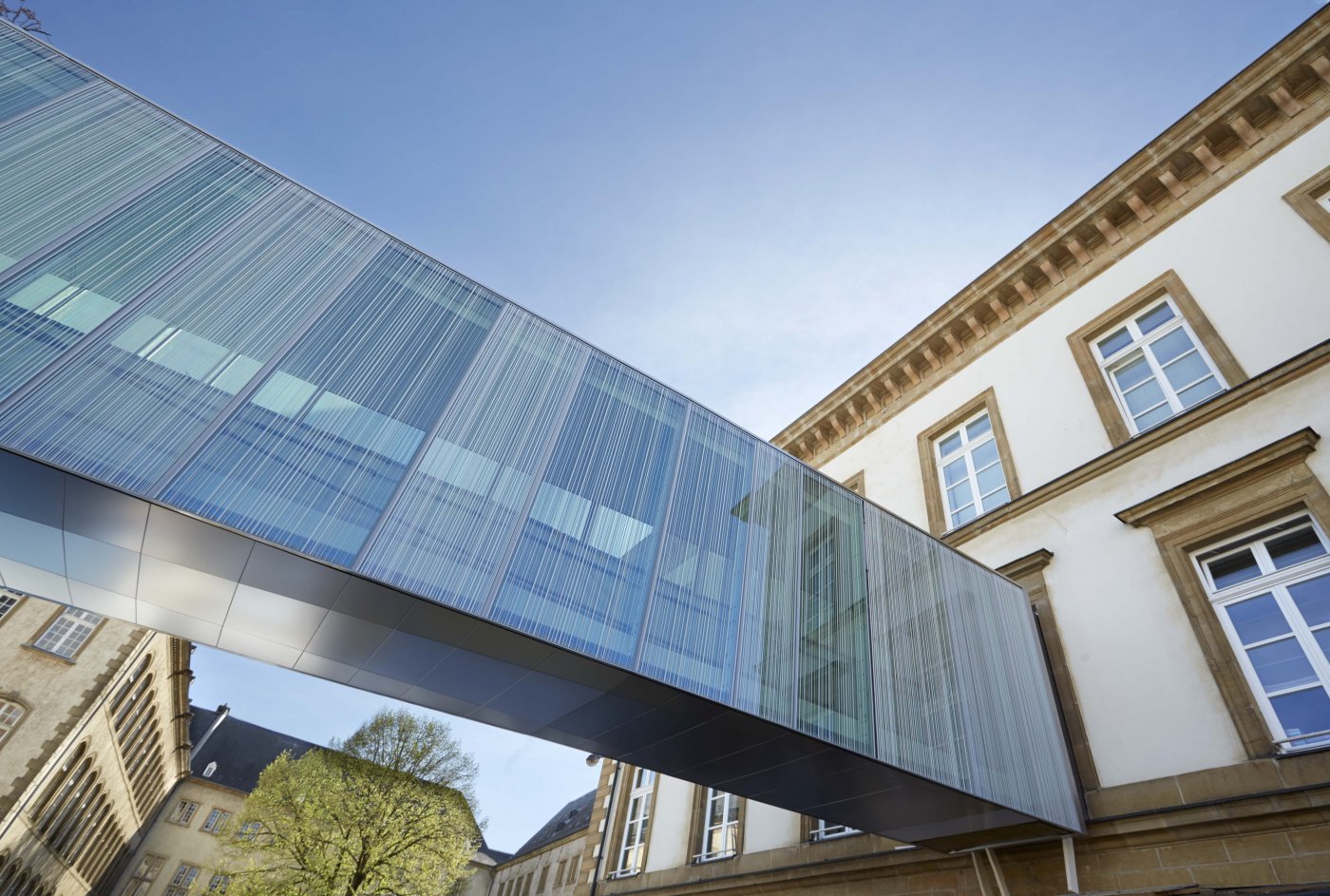Summary record
Video
Tram use and frequency
Question from Elisabeth Margue
I am asking this question to receive more detailed information on the frequency of the tram and its use. As such, I would like to put the following questions to the college of aldermen:
- According to official data published on the transport portal (https://transports.public.lu/fr/contexte/situation-actuelle/chiffres-cles.html#), over 20,000 people take the tram each day. Does the City of Luxembourg have more detailed information, such as the number of people taking the tram during peak and off-peak times?
- Are counts performed on a regular basis to ensure that the tram's schedule is suited to user demand?
- Based on the information it has, does the City of Luxembourg believe that the capacity of the tramcars and the frequency of service during peak times are sufficient to meet user demand?
- Can the City of Luxembourg confirm that the tram always has priority over other users of public thoroughfares?
- Can the City of Luxembourg confirm that, generally speaking, the tram service operates on time and according to schedule? Are there medium- or long-term plans to reduce the tram's travel time between the "Luxexpo" and "Place de l'Etoile" stops?
Response by Patrick Goldschmidt
Alderman Goldschmidt thanked the Mayor and Chairwoman and Ms Margue for these interesting questions about the tram and replied that information required to answer them had been gathered from Luxtram and the City of Luxembourg's internal departments. Regarding the daily use based on information obtained from Luxtram, statistics show that 22,000 people use the tram daily on the current route. Regarding peak time use, the service is used by 3,100 people between 8:00 and 9:00, and 2,500 people between 17:00 and 18:00 (second peak period). Use is lower between 10:00 and 11:00.
The frequency of service is currently sufficient, with the tram running every few minutes. In addition, Luxtram performs a monthly assessment regarding user needs.
Furthermore, to cope with heavy demand, on 3 June 2019 tram frequency was stepped up from one tram every six minutes to one tram every five minutes (increasing from 10 to 12 trams per hour).
As for the priority of the tram over all other traffic, he said that initially this rule had not worked so well because each tramcar needed to be fitted with a special transmitter. Currently, the idea is that the tram should stop only at scheduled stops, and that signals, particularly the light signals, should work to enforce the rule giving priority to the tram.
As for the question about delays on the line, it must be emphasised that the tram generally does not run late: 50% of the time, the tram arrives at a stop within 30 seconds of its scheduled time, and 80% of the time within 1 minute of the scheduled time.
Regarding travel times and the possibility of speeding up the tram, on 8 April 2019, Luxtram increased the speed on the Luxexpo–Place de l'Etoile section, but this saved only one minute in travel time, which dropped from 17 minutes to 16 minutes. This is because there are 11 stops, not to mention a number of residential and business entrances/exits, along the 5.6-kilometre route. Consequently, it would be very difficult to shorten the current travel time even further. However, with the extension of the tram route towards the train station, we would need to determine whether the travel time could be improved, as the City of Luxembourg would like people to use the tram as much as possible.
Rented social housing in Luxembourg City
Question by François Benoy
Rented social housing is an effective tool for mobilising unoccupied housing, creating truly affordable accommodation for people in need and thus promoting social diversity across the city. For these purposes, the City of Luxembourg has an agreement with the Social Housing Agency (Agence Immobilière Sociale – AIS).
With these points in mind, I would like to put the following questions to the college of aldermen:
- What is the purpose of the agreement between the City and the AIS? When did it enter into force? Have any amendments been made to the agreement in recent years?
- How many housing units in Luxembourg City has the AIS been able to mobilise each year since the agreement was entered into?
- Given the effectiveness of the AIS in mobilising unoccupied housing, shouldn't this collaboration be stepped up?
- In addition to the mobilisation of unoccupied housing, the AIS has floated the idea of mobilising vacant building land to build modular homes. What do you think of this concept? Wouldn't it be a good idea for a new pilot project in Luxembourg City?
Response by Isabel Wiseler-Lima and Lydie Polfer
Regarding the question about the purpose of the agreement with the Social Housing Agency (Agence Immobilière Sociale – AIS), Alderwoman Wiseler said the agreement was entered into in 2013 and that through it, two people paid by the City of Luxembourg were hired by the AIS for the purpose of "PISL" (social inclusion through housing) projects, of which there were 50 for the target population at the end of a two-year period (in 2015), and that beginning in 2015, a total of four people were employed for a total of 100 PISL beneficiaries. As for the number of families who have been housed by the AIS since it was created in 2009, Alderwoman Wiseler did not provide details for all the figures, but said that between two and seven families were housed between 2009 and 2015 and that since 2016, these figures had risen to 30, 30 and 10, with a total of 71 families housed in Luxembourg City.
She also said that the AIS had accommodation throughout the country, and that it had been decided that the AIS would try to re-house people in need who are currently housed in centres.
Regarding new projects, there is ongoing dialogue between the City of Luxembourg, the AIS, the Central Housing Assistance Office (aide au logement), the Office social (Social Welfare Office) and the City of Luxembourg's Service Logement (Housing Department) with a view to helping people in need who are having difficulty finding accommodation on their own. As for vacant building land, all possible avenues are being explored as part of the dialogue between the City of Luxembourg and the other stakeholders.
The Mayor-Chairwoman said that she had noticed that the AIS leases were being terminated after three years, and that the families were then evicted. She believed that this ran counter to the City's social policies and exacerbated these families' precarious housing situation. Thus changes must be made to the existing legal framework to help families feel at home in their accommodation and integrate fully into their district of residence (school for children, etc.). Finally, on this same topic, she had brought this issue to the attention of the minister in charge.
Parking permits for professional service providers
Question by Cathy Fayot
During periods of intense activity in the building sector, as is currently the case in Luxembourg City, our city's streets are overrun on weekdays with vehicles used by building and renovation contractors.
Many of these vehicles display a blue permit issued by the City that allows free parking with no time restriction in all of the City's districts.
This state of affairs leads me to ask the following questions:
- What are the legal grounds for issuing this permit, which gives holders exorbitant rights compared to ordinary users of public thoroughfares? Has the City introduced a specific regulation, and if so, what is it?
- How many of these blue permits are currently in circulation?
- How long are they valid for? Can they be revoked, for example, when construction work is completed, or are the businesses allowed to keep them? How many permits can a business apply to the City for?
- What are the conditions for receiving these permits given that the permit tersely states "for certain professional service providers"? Does this mean that the permit is not connected to a particular work site, and that it entitles the permit holder to park anywhere the city for any amount of time, and exempts them from checks by parking enforcement agents in blue zones?
Response by Patrick Goldschmidt and Lydie Polfer
Alderman Goldschmidt replied that a review of the system was under way to see how it could be improved. The current system is based on Article 5 of the Luxembourg Traffic Code, which allows municipal administrations to regulate the issue of parking permits for private or professional purposes. As such, the City of Luxembourg's regulation of 13 October 2003 specifies the terms and conditions for obtaining and using the parking permit for certain professional service providers.
It should be noted that there are currently 4,764 professional permits in circulation, specifically:
- 208 permits that are valid for 1 month,
- 383 permits that are valid for 3 months,
- 1,149 permits that are valid for 6 months
- and 3,024 permits that are valid for 12 months.
The validity of these parking permits ranges from 1 to 12 months, and the cost of the permit depends on how long it is valid for, namely:
- €50 for a permit that is valid for 1 month,
- €115 for a permit that is valid for 3 months,
- €185 for a permit that is valid for 6 months,
- and €375 for a permit that is valid for 12 months.
A business may obtain as many permits as it wishes, and may register up to three licence plate numbers on each permit. In addition, in the City of Luxembourg regulation regarding parking permits, the types of services that are eligible for this type of permit are specified.
The parking enforcement agents ensure that these professional permits are being used for the purpose for which they were issued when the vehicles are operating at a work site, and that they are not being used to park numerous vehicles in the district where the company has its head office, even though these checks are not always easy to perform.
The Mayor and Chairwoman added that, insofar as possible, and despite the fact that Luxembourg City is a "living" city, steps are taken to check that there is no abuse in this regard, and it is therefore a matter of finding the right balance with the interests of the companies working in the city.
Unoccupied former school buildings
Question from Claudie Reyland
I have noticed that there are quite a few former school buildings in Luxembourg City that have remained unoccupied for months or even years. (e.g. the former preschool on Rue de Neudorf).
As such, I would like to put the following questions to the college of aldermen:
- Which former school buildings are no longer being used as schools?
- Which buildings in Luxembourg City are unoccupied, empty former school buildings?
- Has the college of aldermen made any plans for the future of these unused buildings?
Response by Lydie Polfer
The Mayor and Chairwoman replied that the City was in discussions with the Ministry of Education (Ministère de l'Education nationale) to use the building at no. 25, Avenue du X Septembre in Belair to house the Centre pour le développement intellectuel (Centre for Intellectual Development – CDI), formerly the EDIFF, which is currently located on Rue Pierre d'Aspelt.
As for no. 5, Rue de la Congrégation in the city centre, this building is currently being rented by the Lycée des Arts et Métiers for new brevet de technicien supérieur (advanced technician's certificate – BTS) programmes. There had been plans to set up a crèche there, but given the location, and the fact that it would have led to a significant increase in traffic with parents dropping off and picking up their children, the crèche will be housed in the vacated site on Rue Pierre d'Aspelt.
Regarding the buildings in Clausen at no. 18, Montée de Clausen, the City would like to use them as a venue for Luxembourgish and foreign-language courses. The future use of no. 53, Allée de Mansfeld has not yet been determined, and this site is being held in reserve for potential unforeseen needs.
No. 5, Rue de l'Abbatoir in Hollerich is a modular building made from containers that are expected to be reused to renovate the Gasperich school.
In Neudorf, the former preschool at no. 147, Rue de Neudorf, which is between 30 and 35 years old, is to be torn down, and the primary school (located at no. 257, Rue de Neudorf) is currently occupied by the Laladudo foyer scolaire (childcare centre).
Finally, in Limpertsberg (no. 48, Rue Henri VII), there is a plan to refurbish the building of the former primary school and convert it into a school complex with a foyer scolaire for children in Cycle 4.














